How can you hide pipes in a toilet?

Sewer pipes in the toilet not only visually "eat up" the space, but also look unpresentable. They can only fit perfectly into a loft-style interior. In all other cases, the owners want to disguise them, or even hide them altogether behind additional structures. Now in stores you can find materials for every taste and wallet. Let's take a closer look at how you can hide pipes in the toilet.


Pipe routing diagrams
The issue of masking sewer pipes worries both the owners of small bathrooms and large ones, because the aesthetic appearance of the room depends on this.
If you decide to hide communications, then you must first of all pay attention to their location.
There are 2 wiring options available.
- Consistent. Only one consumer is connected to the main riser, the second is connected to the first, and the third is connected to the second, and so on. It should be borne in mind that the water pressure will be less when several consumers are turned on at once. This design is quite simple, but it takes up a lot of space. This option is well suited for a small apartment with a small number of tenants.
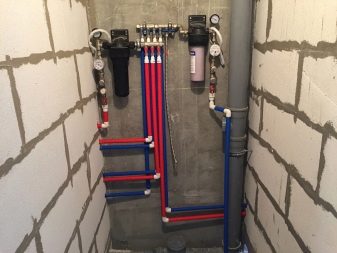
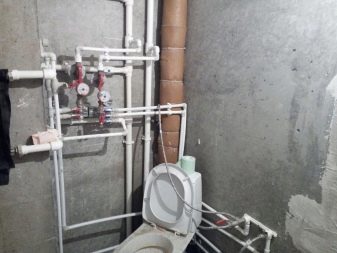
- Collector. All consumers are connected by special elements (collectors) directly to the riser. This wiring option is considered optimal, since the water pressure remains unchanged for all consumers, and if necessary, only one device can be turned off. However, such a scheme is rather complicated to construct.
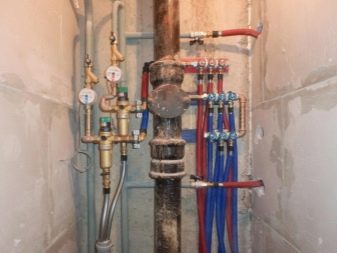
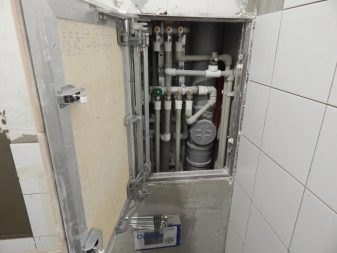
The standard wiring diagram for plumbing in most apartments is that the main riser is in the corner, and several pipes are laid from it to the consumers. To hide them, 2-3 additional constructions are suitable. If you also need to hide additional elements, for example, counters, filters, collectors, then here you already need to build a partition or a screen. In a private house, you can hide sewer pipes in walls or niches, you can bring all communications into a small room.
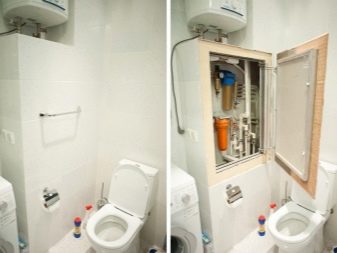
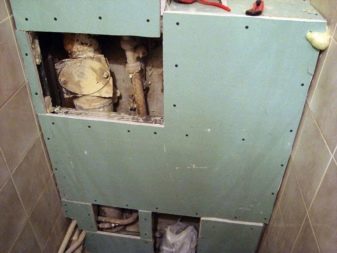
Where to begin?
First, you need to plan the placement of the structure and leave the meters and cranes within reach, so that you always have access to them in emergency situations. For example, these can be boxes with doors. This point needs to be thought out even at the stage of planning a sketch on paper, in advance to cut out all the necessary holes in the material with which you are going to sheathe the pipes.
And also worth remembering - the more there are various joints and adhesions on a pipe segment, the more likely it is to leak... Therefore, it is necessary to check all communications for leaks, and in case of flaws, replace with new ones.
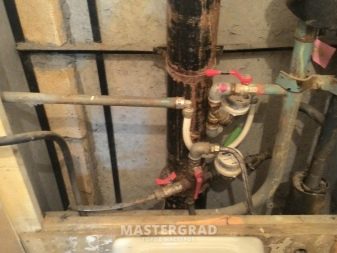
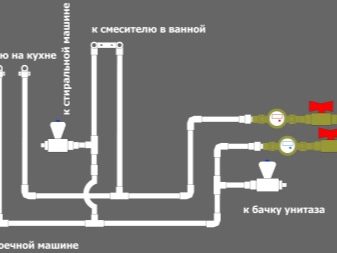
Tees, elbows and other accessories must be made of the same material as the pipes to prevent leaks, otherwise the repair will be in vain.
Including you need to measure the area occupied by the pipes that you want to hide in the toilet in order to calculate the amount of materials. Consider the design of your bathroom, as not all materials are compatible with each other (for example, light tiles and dark wood).


Requirements for materials
Materials must have the following qualities:
- moisture resistance - this is a room with high humidity, materials should not be covered with mold and mildew;
- strength - the meter and taps must be in constant access, so fragile structures will not last long;
- aesthetics - the materials should be combined with the interior in the bathroom.
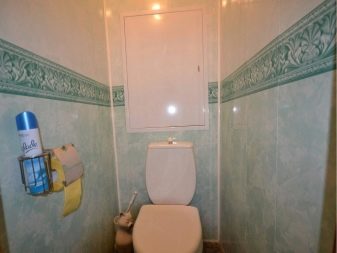
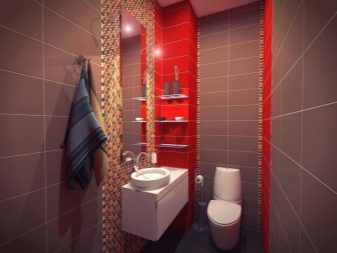
What and how can you close it?
Thanks to the variety of materials on store shelves and the imagination of designers, today everyone can easily choose the option of masking sewer pipes in the toilet, which is right for him.
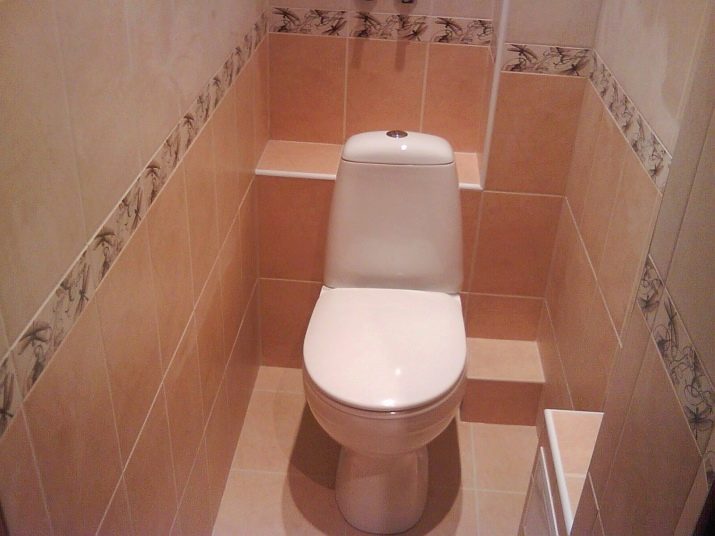
Plastic panels
This method is the most popular, since installing a box made of plastic panels is not as difficult as it seems at first glance. In addition, this material has such advantages as:
- low cost;
- a wide range of products (colors);
- low weight of the structure;
- easy installation;
- moisture resistance;
- long service life.
Plastic panels are composed of polyvinyl chloride, so you can find the name PVC panel or lining. Standard sizes: thickness - up to 1 cm (inside a cellular structure), length - 3 m, and width can be different - from 15 to 50 cm.
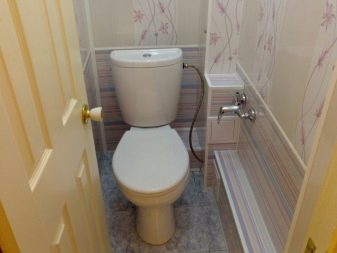
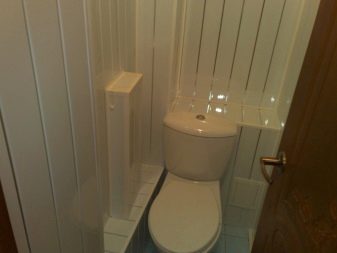
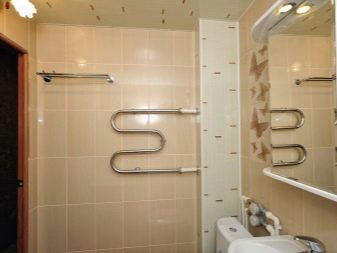

When purchasing materials consider the thickness of the panels and profiles. To install the plastic box, you will need tools: a knife, screws, a screwdriver, a level. After checking all communications and accurate measurements, you need to form a frame from profiles and sheathe it with panels. It's best to sketch first, then mark the floor, ceiling and walls. You can also use glue for fastening, but it is better to use self-tapping screws.
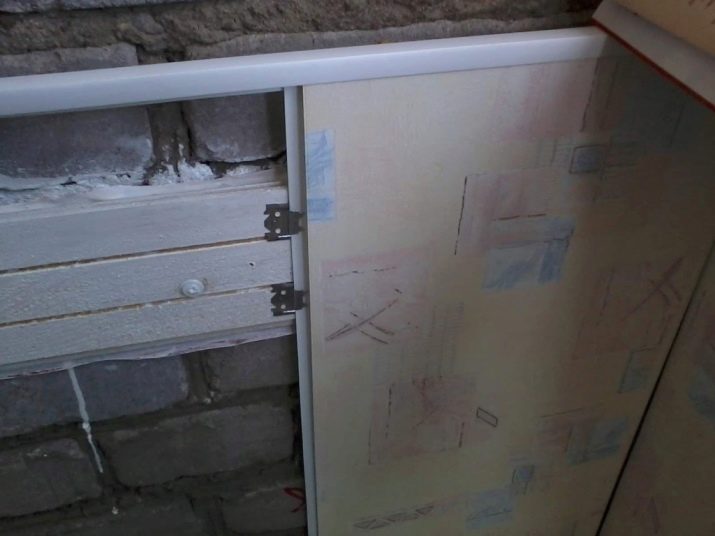
Drywall
This method is very similar to the previous one both in terms of material characteristics and in the installation process, but there is a main difference. After the construction of the structure, plastic panels do not need further processing. An important feature that you definitely need to pay attention to is the moisture resistance of drywall. Other models of this material are not suitable for work in the bathroom.
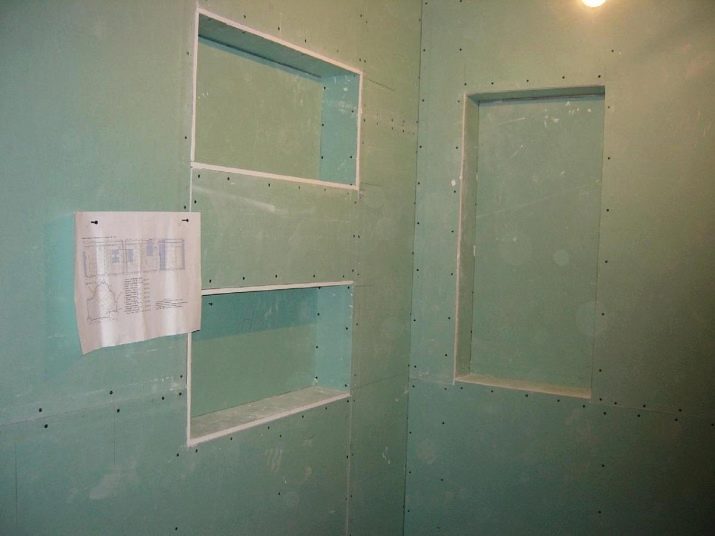
Installing a drywall box involves the same actions as in the previous method, namely:
- make markings on the floor and walls, having previously drawn a diagram on paper;
- prepare the profile and connecting elements;
- fix the frame on the wall;
- sheathe the structure with plasterboard.
After all work, the material must be primed, thereby preparing for decoration.
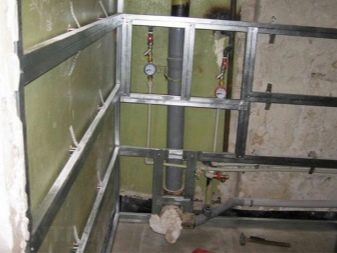

Most often they use the same tiles that cover the walls of the room. Also, the structure can be painted or sheathed with plastic panels. The profiles and the box must be installed at a distance of at least 3 cm from the pipes.
It should also be borne in mind that in case of possible breakdown, it may be necessary to dismantle the entire structure.
Sanitary cabinet
This option is suitable for those who have a lot of space in the toilet. The doors that cover the sewer pipes are attached to a structure made of plasterboard or plastic panels. The fasteners must be strong, since the doors will be in constant use. If you don't have much room for regular swinging doors, but you like this camouflage method the most, then you can use sliding doors.
For the manufacture of the cabinet, you can choose any material: drywall, plastic, wood (plywood) or glass. The main thing is that it is combined with the rest of the decoration in the toilet and does not clutter up the space.
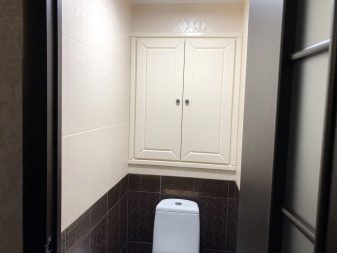
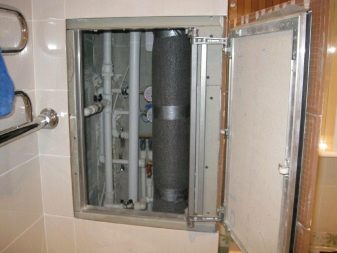
False wall
If the sewer pipes are located along the entire wall in one plane, then a false wall is perfect to seal them up. Such a structure will be easier to build, since it does not require corners.
It is necessary to fix the profile on the walls and sheathe it with plasterboard or plastic.
After sheathing the pipes, free space may remain between them, which can be used as shelves for storing household chemicals. The main thing is to think it over in advance, as well as cut holes in the material.

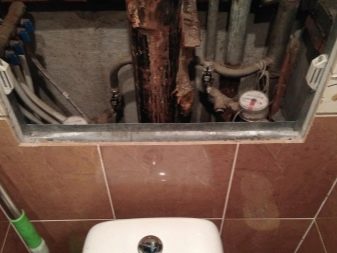
Decorating options
After all the repair work has been completed, you can think about the decor. Decorations will give the room a more well-groomed and aesthetic look. As mentioned earlier, plastic panels do not need to be decorated, as the variety of materials allows you to choose panels to match the color of your bathroom. But anyway they can be painted with moisture-resistant paint after preparing the surface.
Drywall can be decorated in different ways. The most common way is to lay the same tiles as throughout the room. Then all structures will become invisible. And also drywall can be painted.
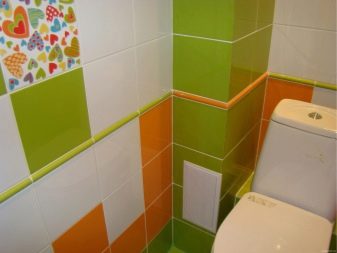
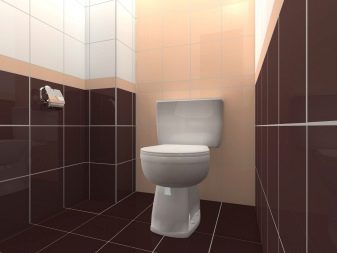
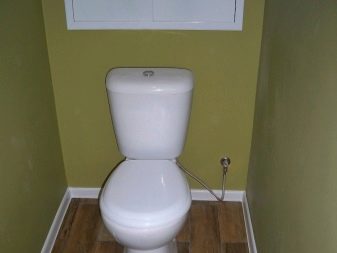

If the pipes run horizontally near the floor in order to properly use and save space, on top you can make a shelf and remove items needed in the toilet on it. It is better to choose additional hatches and ventilation from plastic, since they are lighter and easier to care for.
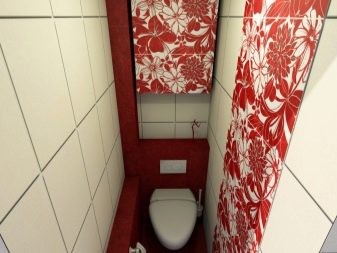
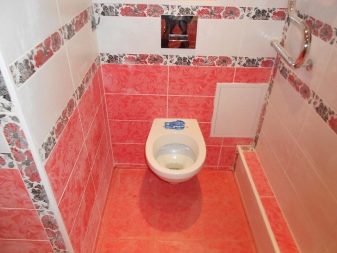
You can choose acrylic glue to attach them. Excess can be wiped off with a wet cloth until it dries.
The holes for meters and taps also need to be masked to make the structures look beautiful. For this, several materials are used.
- Door. It is inserted into the frame, it can be made of drywall, plastic, metal. There are ready-made doors that do not need to be decorated. But, if you still need it, tiling is perfect.
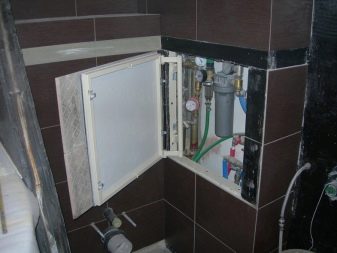

- Blinds. This material is presented in different colors and materials, so you can choose for yourself exactly what suits your interior.
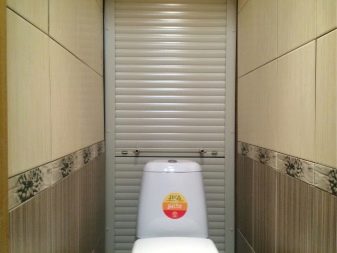
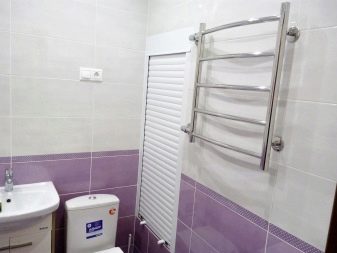
As for the materials, it is better not to choose fabric blinds, since it will be difficult to care for them. This method of decoration does not take up much space compared to the doors, because when they are opened, they twist into a roll.
If you do not want to cover the sewer pipes with additional structures, then you can always show your imagination and paint the pipes as you wish. Such pipes become part of the interior, which can be presented in styles such as:
- loft - pipes can be painted gray or black; copper color is also suitable for this style;
- eco-style - the vertical riser can be disguised as a tree or decorated with artificial flowers;
- nautical - pipes can be pasted over with glass pebbles, shells or twisted with twine;
- can be used decoupage technique, mosaics from a variety of materials.
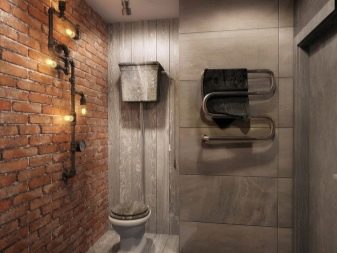


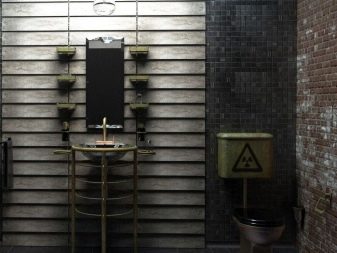
You can give freedom to your imagination and create a truly unique design solution in the toilet. Keep in mind how you will care for your pipes, as some materials are not suitable for the bathroom.
As you can see, there are several ways to close the toilet drain. It all depends on the conditions of the bathroom, desire and creativity. High-quality constructions will last a long time and will become part of your interior.
For how to quickly build a pipe box, see below.








